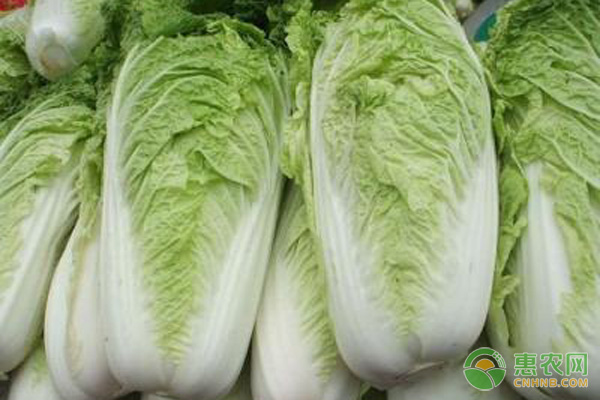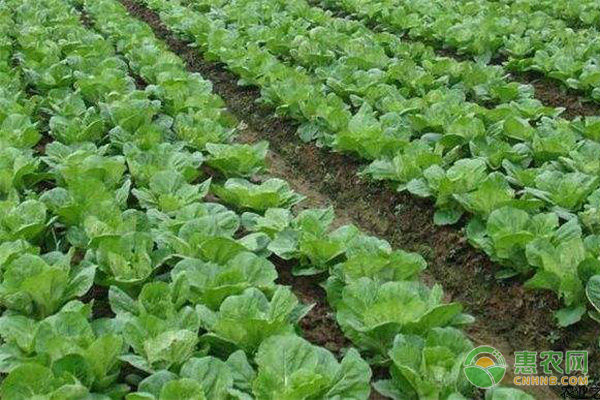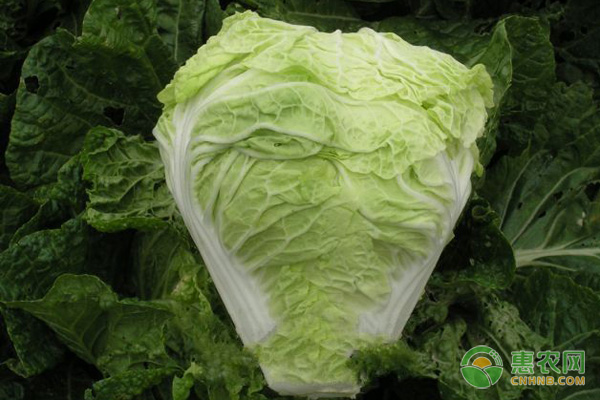How to cultivate spring cabbage? Introduction of cultivation methods of southern spring Chinese cabbage
Spring cabbage is a vegetable cultivated by many people in the south. It is usually planted in early spring or late spring for April-June. The cultivation techniques of spring Chinese cabbage are different from other vegetables and are quite special. Then how to cultivate spring cabbage? Introduction of cultivation methods of southern spring cabbage.

1. Select the variety
Winter special, early maturity, heat and disease resistance, high yield, high quality spring special varieties, such as Yangchun, strong, spring general, Chunxiao.
2. Cultivate seedlings
(1) Select the sowing date 1 plastic greenhouse cultivation sowing period is in early February, and use the warming greenhouse to raise seedlings. 2 The spotted period of the small arched shed or the small arch shed is the middle and late February. 3 Open field film covering live or open field seedling cultivation The sowing period is from mid-to-late March to early April, and the weather can be warmed up in advance, and it can be properly broadcasted in the event of cold weather.
(2) Preparation of nutrient meal (blocks, trays) It is necessary to use nutrient meal, nutrient block or plug seedlings, and some need to be planted. First prepare nutrient soil, use 60% garden soil, add 25% fine pig manure and 15% human waste, and add 30-50 kg of fully decomposed chicken manure per cubic meter of culture soil, ternary compound fertilizer 1 kg, fully mixed, use plastic nutrient 直径 with a diameter of 7-8 cm, first install 钵 high 1/3, slightly compacted, round the bottom, then fill it slightly, compact, and not loose when tilting should.
(3) When planting and sowing, lie 0.5 to 1 cm deep holes in each center, and select 3 to 4 seeds per hole, cover soil 0.5 to 1 cm thick, and cover the soil with chlorothalonil or carbendazim.
(4) Seedling management after planting
The surface of the bed can be sprayed with 50% phoxim emulsifiable concentrate from 1 200 to 1,500 times before the seedling to prevent pests. In the 3 to 4 leaf stage, 2 plants per hole were left, and 1 planting seedlings were left in the 5 to 6 leaf stage. At night, the temperature should be kept at a low temperature, and the night temperature should not be lower than 10 °C to prevent the seedlings from twitching prematurely through vernalization. In the early stage of growth, heat preservation is the main factor. In the late growth stage, attention should be paid to ventilation and moisture according to temperature changes, so as to prevent the temperature from being too high and causing the seedlings to grow. Before transplanting, according to the condition of the seedlings, ventilation and refining.

3. Daejeon planting
(1) The whole soil is used for the selection of soil loose and fertile, sunny, dry, and refreshing. Use deep ditch and sorghum. Generally, the width is 1 meter, the height is 10 to 15 centimeters, and the width of the sulcus is 25 to 30 centimeters.
(2) Applying fertilizer per field (1 mu = 667 square meters, the same below) Applying organic fertilizer of 3,000 kg or compound fertilizer of about 50 kg as base fertilizer. In combination with the application of organic fertilizer, a small amount of potassium chloride or superphosphate can also be applied. Combine with the ground preparation or according to the determination of the plant spacing to open the hole to apply the base fertilizer, you can also use the human and animal dung to pour the hole, dry the sun after drying, then planting.
(3) Planting 1 Planting period: The planting period should be determined according to the temperature of the growing environment and the ground temperature of 5 cm. When the two are stable through 10 °C and 12 °C respectively, they can be safely planted. The suitable seedling age is about 25 days. Suitable physiological seedling age is 4 to 5 true leaves. 2 Planting specifications General plant spacing (35 ~ 40) cm × 50 cm, 3 500 ~ 4 500 plants per acre.
3 Colonization method: When planting, choose the windless afternoon, first cover the mulch in the sputum, compact around, and plant the stalk according to the plant spacing, and bring the soil stalk to colonize to ease the seedling. Water immediately after planting. The live broadcast will be early in the morning, early seedlings.
4. Cultivation management
(1) In the greenhouse cultivation, attention should be paid to the shed film to expose the night cover, to keep warm in the early spring and evening, and to ventilate and dehumidify when the weather is fine.
(2) Remove the mask from the mid-April in the mid-April, leaving only the apical membrane.
(3) The application of seedlings should be carried out as soon as possible. After the seedlings are applied, the fertilizer should be applied, and 10 to 15 kg of urea per acre.
(4) After moisturizing seedling period, there is generally no watering or cultivating after mulching, and the small water is poured during the ball-forming period. The soil is kept dry and wet, the soil surface is not white, and the watering is suitable for furrow irrigation. Large water irrigation to reduce the occurrence of soft rot.
(5) Combined with watering and filling, the heart of the rosette is combined with watering and re-application of heart-shaped fertilizer. The per-mu is applied with 30 kg of diammonium phosphate, 20-25 kg of urea and 10 kg of sulfuric acid. In this period, 0.2% can also be used. Potassium phosphate monohydrate sprayed 2 to 3 times. There is no need to topdress in the middle and late stages of the ball.
(6) Master the principle of watering and topdressing of spring cabbage, pay attention to strengthen drainage, combine fertilization and disease prevention after rain, not suitable for seedlings, to attack the fertilizer and water, promote the vegetative growth, inhibit plant twitching, and make the growth of rosette leaves and leaf balls. The speed exceeds the growth rate of the calyx and grows into a firm leaf ball before the calyx does not extend.
5. Harvesting
Spring cabbage is generally matured 50 days after the planting (live for 60 days). At this time, it must be harvested in time to prevent high temperature and rain in the later period, causing cracking, rot or convulsion, reducing the value of food and commodities. Can be harvested in batches according to market conditions, appropriate early harvest.
In addition to seedling transplanting, spring cabbage can also be used for live broadcast. On the basis of applying the base fertilizer, fine soil preparation, flat or high sorghum. It can be used in strip, hole or strip. The seeding is a shallow ditch that is 2 to 3 cm deep in row spacing, watering the water, spreading the seeds evenly into the ditch, and then covering with fine soil. The hole sowing is a hole that is 2 to 3 cm deep in the row according to the plant spacing. The water is spotted, and 2 to 3 seeds are planted to cover the fine soil. In the line, the shallow ditch is 4 to 5 cm long in the row, and the water is spotted. Then the seeds are evenly spread into the ditch and covered with soil. Covered with mulch after sowing, 2 pieces of true leaves are revealed, and the film is exposed in time. The membrane should be tied with a small hole, so that it is suitable for the emergence of the seedlings. In the case of 2 pieces and 5 pieces of true leaves, the seedlings were separated once. Other management and seedling transplanting.

The cultivation method of spring Chinese cabbage is introduced here. After reading the above introduction, is it true that it is very confident to cultivate spring cabbage? Spring Chinese cabbage is a vegetable with high nutritional value. Its time to market can overcome the low season of vegetable supply in late spring and early summer, so it is a vegetable with great cultivation prospects.
Rabies Vaccine (Vero Cell) for Human Use, Freeze-dried is a preparation of rabies fixed virus CTN-1V inoculated into Vero cell. After cultivation by bioreactor, harvest the virus suspension; further perform the concentration, inactivation, and purification. The vaccine is formulated by adding human albumin, dextran 40 and sucrose through freeze-drying process. The freeze-dried vaccine looks like a white crisp cake which turns into a transparent liquid after reconstitution, without any preservative. Active ingredient: inactivated rabies fixed virus. Excipients: Human albumin, dextran 40, sucrose, sodium chloride, potassium chloride, potassium phosphate monobasic, dibasic sodium phosphate. Diluent for vaccine: sterile water for injection. The specification is 0.5ml/vial after reconstitution. 1 vial (0.5ml) per single human dose. The vaccine titer should be not less than 2.5IU.
Rabies Vaccine For Human,Human Freeze Rabies Vaccine,Human Rabies Vaccine Storage,Freeze Rabies Vaccine For Humans
Changchun Zhuoyi Biological Co., Ltd , https://www.zhuoyi-bio.com